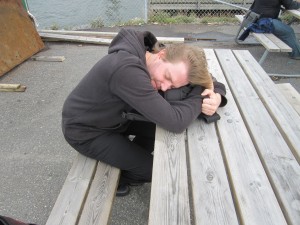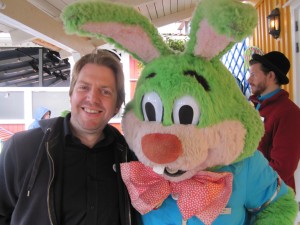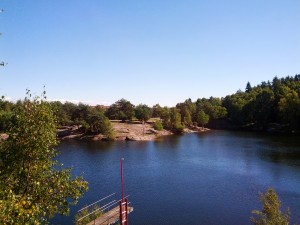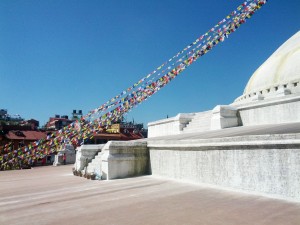Jon Harris, aka the Money-Burner, recently published an account of the Cerne2CERN pilgrimage, Barefoot in Bollingen. It’s a great essay, threading together a number of themes.
The pilgrimage was a strange and significant event for me, and one I don’t yet understand; but I’m OK with taking a long time to absorb what happened. Those few days were like nothing I’ve done before. I’m taking my time to interpret and understand the events, and seeing the writings and responses from other pilgrims is a part of this.
One of the many aims of the pilgrimage was as an action to eliminate ‘story as we know it‘, an idea raised in Daisy Campbell’s show Pigspurt’s Daughter. But there were a lot of other aims, and whole networks of meanings and correspondences. To quote Jon quoting Daisy quoting Bill Drummond, ‘As to why, if we knew why, we wouldn’t be doing it’.
Jon’s essay explains why we went barefoot in the final part of the journey to Jung’s garden; it was related to the procession of the Crown of Thorns into Paris. The essay also talks a lot about ritual, something I’ve been thinking a lot about, particularly in relation to the Loops performance. I was particularly taken by the idea that ritual should be about more than producing an effect:
In my own Rituals I’ve found that the more I can let go of the idea that a Ritual has a function — that it is for something — the more powerful it is. What I mean by ‘powerful’ is that it sits more solidly on its own fixed point and so exerts a greater pull on the vortex of synchronicities that surround it. It pulls them into being.
There are other things I love about the essay. I love the glimpses of the pilgrimage’s logistics – as someone who’s worked as a project manager, I learned a lot from seeing Jon and Daisy work. I have no doubt that those lessons will emerge in upcoming IT projects. But, swerving from the essay to talking about myself, the piece also made me rethink my writing.
Story tends to be focused on in a lot of writing, even in non-fiction works. The first creative writing course I did focused on literary fiction and we were taught to fold everything into a plot. But story can be unsatisfying – particularly when all of it is based around a limited range of models. For example, Save the Cat dictated the plot of many recent Hollywood films. Jon’s piece made me realise that the writing I’ve loved most over the past few years is not about telling a story as such. Indeed, while it is ‘about’ the pilgrimage, that’s more in the sense of ‘writing around’ than telling its story.
Reading this particular essay made me realise how much I love writing that builds networks of ideas. These sorts of symbolic connections seem to particularly emerge in writing informed by magic, manufacturing (revealing?) meaning in the connections. As specific examples, I’m thinking of John Higgs’ book on the KLF,Cosmic Trigger or Promethea. There are more interesting ways of writing than telling stories.























